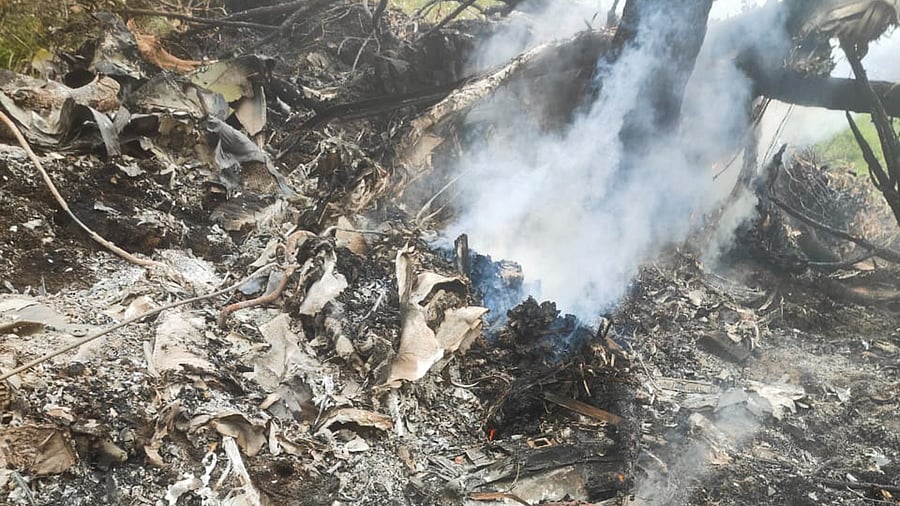
Debris of a helicopter that crashed near the Kedarnath shrine, in Rudraprayag district, Uttarakhand, Sunday, June 15, 2025.
Credit: PTI Photo
The causes of the helicopter crash which killed all seven people on board in Uttarakhand on June 15 are still being ascertained. But the tragedy validates concerns over the ill-informed, government-backed promotion of tourism in a region vulnerable to disasters, natural and man-made. The crash of the Bell 407 helicopter which carried devotees from Kedarnath to Guptkashi on Sunday is yet another reminder of the dangers posed by the rapid development of tourism infrastructure in the Himalayan region. The crash near Gaurikund was the latest in a series of five helicopter accidents on the same route in the past six weeks. One of them claimed six lives and the others involved crash-landing that followed the malfunctioning of the aircraft. The Char Dham shuttle is a prime example of the authorities’ apathy to safety concerns.
The state government, with support from the Centre, has undertaken extensive promotion of religious tourism in the region which is home to many Hindu holy sites. It is a major source of revenue for the government but it also comes with political interests. The Char Dham circuit and the religious tourism infrastructure are political capital for the governments. They have persistently ignored the views of experts and orders by courts to refrain from construction activities that hurt the fragile ecology of the region. The area is prone to seismic activity and the building of roads, dams, and hotels on this brittle terrain creates serious hazards. Climate change adds to the risks. The floods that killed over 6,000 people and trapped over three lakh pilgrims in the area in 2013 have not served as warnings to the authorities. There have also been other warnings in the form of cracks in towns, building collapses, landslides, and changes in weather.
The difficult terrain and fickle weather have made aviation routes extremely hazardous. Chief Minister Pushkar Singh Dhami had told heli-service operators last week that any compromise with safety standards would not be tolerated. The Directorate General of Civil Aviation (DGCA) had ordered special audits and enhanced surveillance of helicopter operations. However, the operators cut corners, violate safety protocols, and throw caution to the winds to make maximum profits. Road travel has also remained risky. Regulation, supervision, and surveillance are all fine ideas but are not enforced for various reasons. The governments should not succumb to political and economic compulsions and endanger the ecology and the lives of people in an unstable and fragile region which calls for greater protection.
